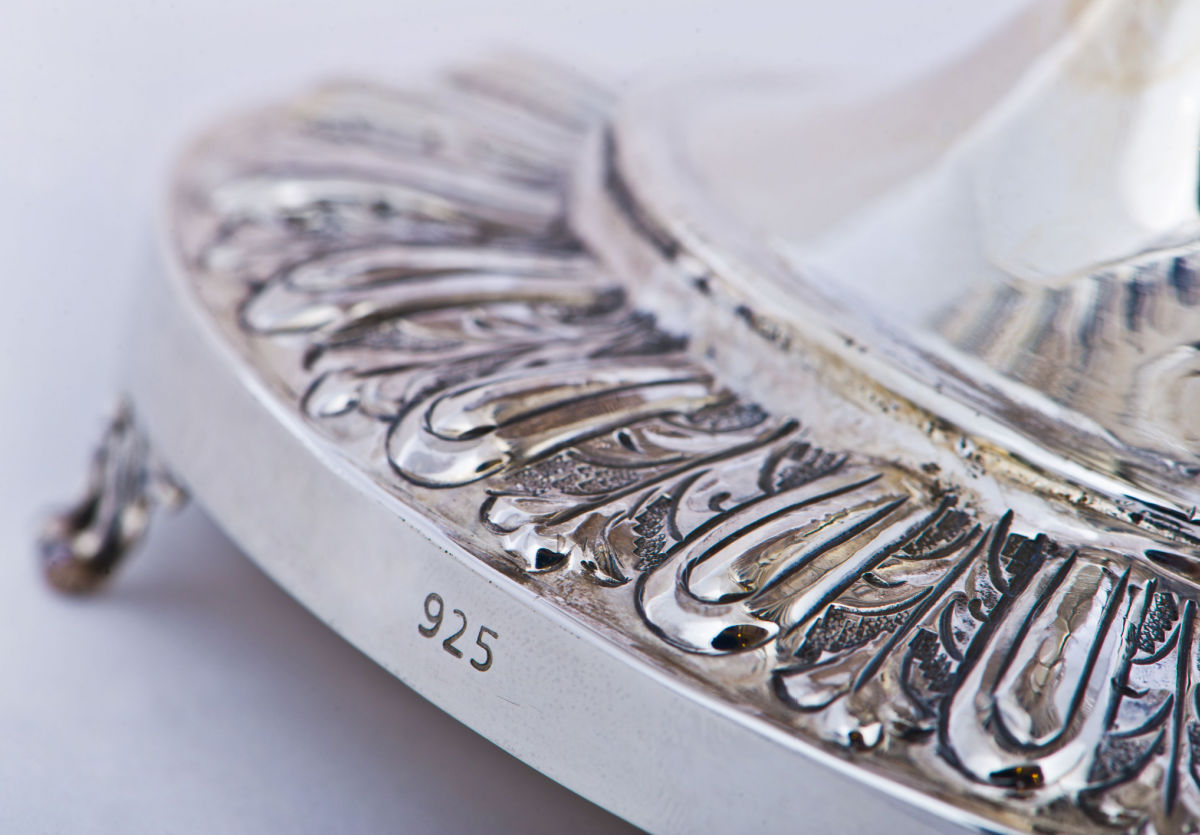Whether you’re interested in buying collectibles or have a handful of jewelry pieces you would like to sell, it’s important to know what materials these items are made of. It’s not enough to simply know they’re “silver” pieces. You need to know what type of silver. This information could make or break your sale (meaning you could lose money if your item is incorrectly categorized). Before you start adding to your collection or selling your inherited jewelry, read this guide to learn about the main differences between sterling silver and fine silver.
A Brief Definition of Fine (or Pure) Silver
First, let’s take a look at what fine silver is. Fine silver is also known as pure silver because it has a silver content of 99.9%. Because of its name and purity level, many people mistakenly believe items and jewelry made with fine silver are the finest and most expensive pieces around. However, this isn’t the case. Because the purity of the silver is so high, fine silver is a very malleable metal. Therefore, it lacks the durability needed to make fine jewelry and other common household items (such as silverware). For this reason, you will likely want to stay away from items made of 99.9% silver.
A Brief Definition of Sterling Silver
Because pure silver is too soft to make items like jewelry and silverware, it is typically mixed with other metals to give it strength. Sterling silver is an alloy made from pure silver mixed with copper (or another metal, such as zinc or nickel). Because it is 92.5% pure silver, it still has the bright and shiny appearance of pure silver, but it also has the durability needed to withstand the wear and tear of jewelry pieces and dinnerware (thanks to its content of harder metals).
The Differences Between Sterling and Pure Silver, Explained
Before investing time searching for sterling silver flatware buyers or hunting down antique items to add to your collection, make sure you understand the key differences between sterling silver and fine silver. You don’t want to buy an item listed as being “pure silver” when it is, in fact, sterling silver. And you don’t want to sell a piece of jewelry or another item for less than it’s worth. To avoid these costly mistakes, review these five differences between sterling and fine silver.
Composition
Most importantly, you need to understand that pure silver has a higher purity than sterling silver. Fine silver is composed of 99.9% pure silver and 0.1% trace elements, while sterling silver is an alloy with 92.5% pure silver and 7.5% other metals.
Durability
While it may seem like the ideal situation is to have an item made of pure silver, in actuality, it’s better to have pieces made of sterling silver. This is because pure silver is very soft and will not hold up to normal wear and tear. As a result, you would pay a hefty price for an item that wouldn’t last very long. Sterling silver, on the other hand, is an alloy mixed with strong metals so that it could put up with years of use.
Tarnishing
Another notable difference between pure and sterling silver is that pure silver does not tarnish, and sterling silver does. So why does sterling silver eventually succumb to the effects of tarnishing? Well, the precious metals it is mixed with are the ones to blame. Copper, nickel, and zinc are all prone to tarnishing when exposed to moisture and gasses in the air. Because air is everywhere, it’s hard to avoid this unsightly discoloration. Fortunately, there are several ways to restore your tarnished jewelry and sterling silver flatware.
Stamp
Silver items are often stamped with numbers or letters, signifying their purity level. These hallmarks can often be found on the bottom or side of the item. Sterling silver stamps include 92.5, 925, 925 Sterling Silver, 925 Silver, STER, STG, and SS. Pure silver could be stamped with 999 or FS.
Uses
Because fine silver is highly malleable, it is not used in making jewelry and household items. You may find it in industrial and electrical applications, however.
Sterling silver is stronger and more durable than pure silver, so it’s often used to make jewelry, silverware, platters, coffee or tea sets, and silver-plated items.
Buy or Sell Silver at The Jewelers & Loan Co.
More likely than not, you will be buying and selling sterling silver pieces rather than pure or fine silver items. However, it’s still important to keep the differences between these two types of silver in mind so that you get your money’s worth when dealing in silver pieces.
If you’re looking to add to your antique collection or would like cash for silver jewelry, The Jewelers & Loan Co. can help you out! We buy and sell silver items and can help you find a piece that completes your collection or give you the best price for your item. Stop by our shop today!
